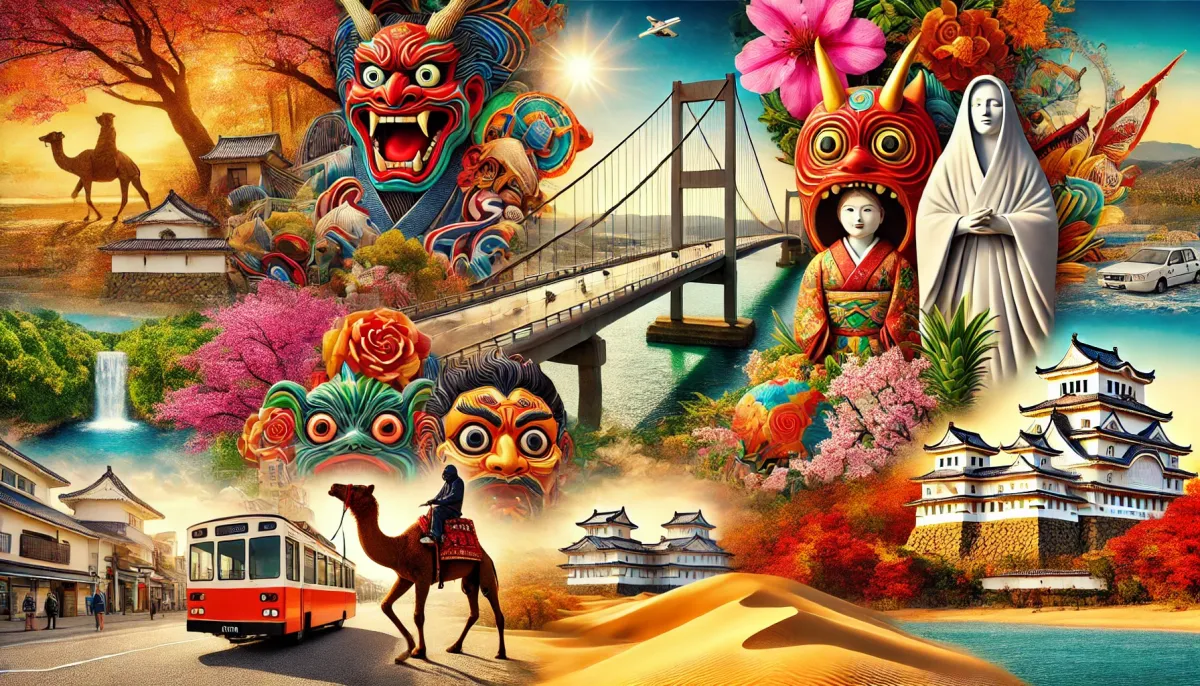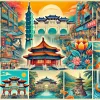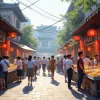Hi everyone, Mark here! As a seasoned traveler with a penchant for Asian adventures, I'm thrilled to share my recent experiences exploring the stunning landscapes and rich culture of Japan's Tottori Prefecture. Get ready to be amazed!
The Illusion of the Eshima Ohashi Bridge: A Masterpiece of Engineering
My trip began with a visit to the Eshima Ohashi Bridge in Sakaiminato, Tottori Prefecture. I'd seen the viral videos, the seemingly impossibly steep incline, and I had to see it for myself. Let me tell you, the photos and videos don't lie – from a certain angle, this bridge looks absolutely terrifying, like a rollercoaster track for cars!
The dramatic angle makes it appear far steeper than it actually is. In reality, while the incline is significant (6.1% gradient – a 6-meter climb for every 100 meters traveled), it's perfectly drivable. Daihatsu, a Japanese car company, famously used the bridge in a commercial to showcase their vehicles’ climbing prowess. The commercial's dramatic angle, however, catapulted the bridge to internet fame.
| Feature | Details |
|---|---|
| Length | 1.7 kilometers |
| Height | 44.7 meters |
| Gradient | 6.1% (6 meters climb per 100 meters) |
| Notable for | Its dramatic appearance in a viral commercial |
Embark on a Yokai Adventure: The Spooktacular Yokai Road
Next, I ventured to Sakaiminato, the hometown of the famous Japanese yokai (supernatural creatures) from the manga series GeGeGe no Kitaro. The city boasts a Yokai Road, a whimsical street filled with quirky yokai statues. Even as an American, I found it a unique and fascinating experience. Whether or not you're a manga fan, the sheer artistry and creativity of the sculptures are worth seeing.
It’s a fun place to take some photos and just enjoy the whimsical atmosphere. The statues range from cute to creepy – depending on your perspective. Even on a sunny afternoon, the playful spirit of the yokai permeated the street. For fans of GeGeGe no Kitaro, this is a must-visit pilgrimage site.
Blossoms and Beauty: Tottori Flower Park
My journey then led me to the breathtaking Tottori Flower Park, one of western Japan's largest floral displays. The massive greenhouse allows for year-round flower viewing, regardless of the season or weather. It is amazing the time and effort that was put into creating this spectacle!
The park showcases a stunning collection of flowers and plants, including 15 varieties of Japanese wild lilies. The Japanese love of flowers, known as hanami, is deeply ingrained in their culture, and this park is a testament to that passion. I even learned that hanami originally referred to plum blossoms, but now primarily celebrates cherry blossoms. The park really lets you experience this love firsthand.
Sand Dunes and Camels: The Tottori Sand Dunes
My Japanese adventure wouldn’t be complete without a visit to the Tottori Sand Dunes, Japan's largest sand dune area, stretching over 16 kilometers long and 2.4 kilometers wide. The dunes are a dramatic landscape, shaped by the powerful waves of the Sea of Japan and volcanic ash from Mount Daisen. It’s a truly awe-inspiring sight, a unique desert landscape in the heart of Japan.
The experience of walking on the dunes, the texture of the sand under my feet, and the view of the vast expanse was truly memorable. And of course, no trip to the dunes is complete without a camel ride – it’s a unique and unexpected experience! It’s also famous for having a vending machine, which is known to have the highest sales revenue amongst all vending machines in Japan.
Autumnal Splendor: Kuju Mountain Park
My exploration continued to Kuju Mountain Park, a breathtaking spot known for its autumn foliage. The park offers stunning views of the vibrant red and gold leaves that paint the mountains during the fall season. I spent hours just absorbing the beauty, the tranquility, and the rich colors.
[block:6
Majestic Beauty: Himeji Castle, the "White Heron Castle"
Finally, I made my way to Himeji Castle, a UNESCO World Heritage site, known for its stunning white exterior, earning it the nickname "White Heron Castle". It is incredibly well-preserved, having undergone extensive renovations.
The castle's white walls are a result of a unique plastering technique using oyster shell powder, a testament to the skill of traditional Japanese plasterers (sakan). The techniques used in its construction and preservation are truly fascinating. I also learned about the castle's intriguing history and local legends. This place is magnificent, and it made my trip to Japan truly complete.







